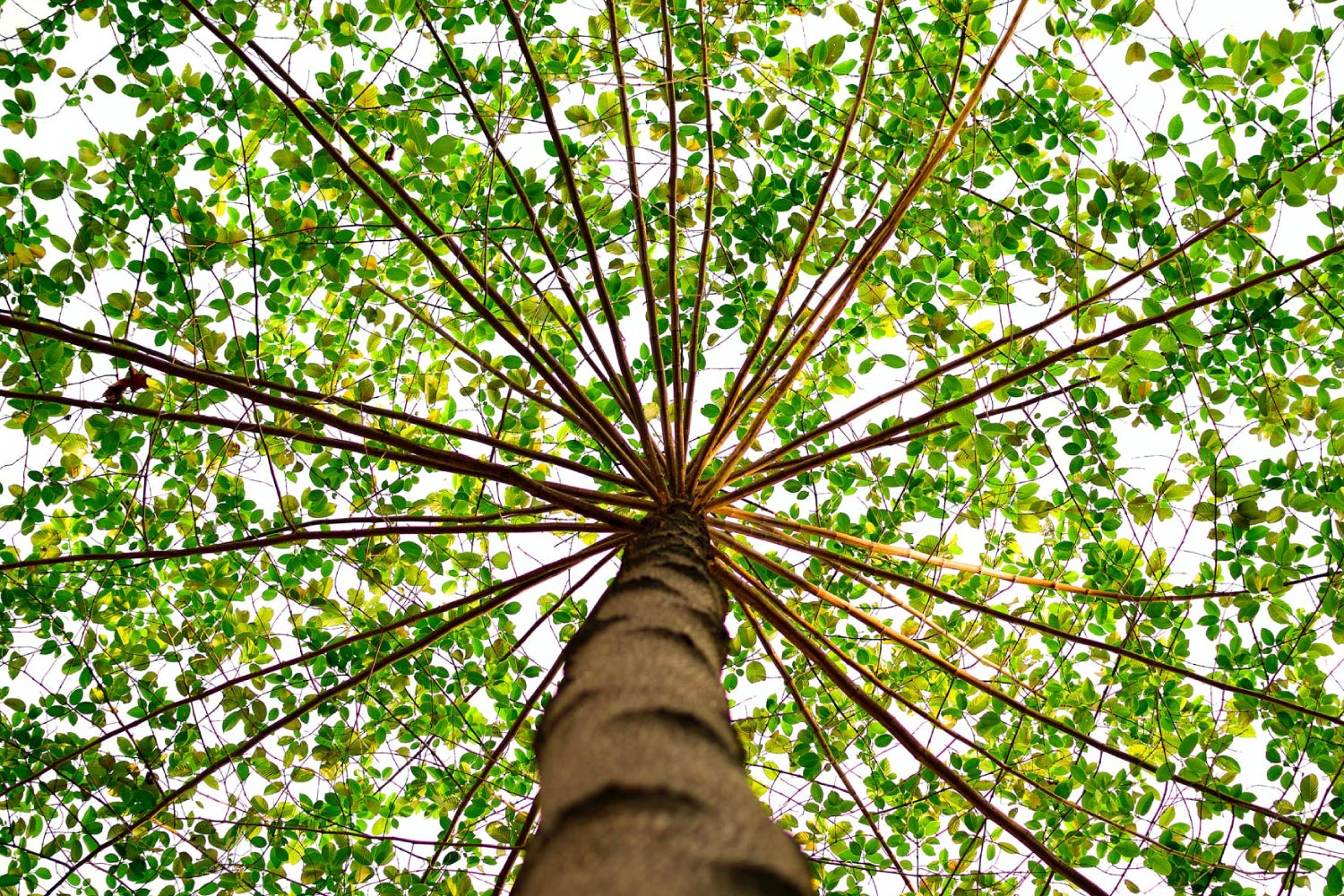Pinpointing the start of one’s journey is never going to be easy. Life is full of starts. Some things stick and some don’t. Some things only click much later. The seasonality of this journey is part of shaping who you are. I believe that it isn’t about finding yourself, rather it is about making yourself.
I’ll begin this story with trees. Well, a drawing of a tree to be exact. A few years ago, I was invited to attend a leadership programme and during one of the group sessions, we were asked to draw a tree. The leaves of the tree were to represent our perceived “personal barriers” in life and the roots of the tree symbolised the perceived root causes of these barriers, the things that hold us back from achieving our goals. I was paired with a lovely Polish lady, Anna, and we were tasked to each draw our tree and then use these drawings to explore what we felt illustrated our barriers.
I come from a very artistic family. My mother and brother (and extended family) would no doubt do a fantastic job at it. I could imagine them around the workbench producing fantastic oil paintings, mosaics or large stained-glass trees. Me, on the other hand, not so much. I knew a few of my strengths and had my achievements, but I was well aware that I possessed not a single artistic bone in my body. So drawing a tree was quite a challenge and after spending a considerable amount of time listening to my partner talking about her barriers, I looked down at my very simply drawn tree and saw nothing in it at all. I mumbled something about not having any barriers.
“Of course, you do,” said Anna. I looked at her, seeing how her session had affected her, how a simple drawing of a tree and a conversation with this stranger about the things that held her back had brought her to tears. I wanted her to continue. I’d much rather have listened to her but she pushed me on, pointing at my pathetic tree. “It’s your turn. What are your barriers?’
I mumbled some nonsense, made small talk, even attempted a joke. Yet, quite quickly this seemingly simple exercise sounded ridiculous to me. I felt myself become rather frustrated and sat tapping my pen at my little stick-figure tree. She continued to stare at me in silence. I kept thinking “I don’t have barriers?” I had already been through a lot, suffered losses and enjoyed many adventures. In my mind, I flicked through a range of life events including, leading a large-scale brand launch for over 5000 attendees, designing bespoke female-only financial training in Saudi Arabia, developing a regional respite care programme for families members of mental health issues, achieving the highest individual sales record for an award-winning London-based media company and once achieving a personal best for swimming 6 hours straight in Malaysia. I had a yhutyloving, supportive family and had much personal freedom though of course, I had dealt with my share of ageism, classism, sexism, and xenophobia. I had failed many times so I was no longer afraid of that. I was not scared of change. Living on three different continents can do that to you.
Anna stared at me. My tree stared at me. She pressed on: “What are your barriers?” Laughing, I replied, “Money. I could do with a couple of million pounds.” No response from Anna. The truth is, I honestly felt I had no barriers, but what then? I looked at the page quietly saying, “What do you do if you have no barriers?” After some time of this, she stood up, looked at me with her kind eyes and said, “You just don’t get it.” and walked away.
For the next hour, I sat thinking, “What could she mean?” After all, I can’t help it if I don’t have any barriers. It was she that didn’t get it. Then suddenly it hit me like a splash of cold water. I got it. I looked at the simple drawing of my tree. Straight trunk, fork-like roots and a cloud-like head for leaves. There was nothing to it. I had no barriers and nothing was holding me back. I knew I could be whoever I wanted. I could absolutely go for it! I was elated, dancing and whooping. I raced to find Anna and gave her a huge hug.
This kick-started a whole new chapter for me. I decided to go for every opportunity I could get my hands on. I brushed up on information technology and systems, took online courses in finance, organisational development, and leadership theory. I put my hand up to manage every local and international training event I could. Outside of work, I contributed to a local town planning project to build a more sustainable traffic system with a focus on improving air quality. I raised thousands of pounds for various local community projects and even kick-started two grassroots initiatives. The first for mental health issues offering evening and weekend activities for those suffering from long- term illness. The second was a “guerrilla gardening” initiative where you find a run-down piece of land and make it beautiful for the community.
If that wasn’t enough, I decided I needed to go back to university and enrolled to do a Master’s degree in business administration (MBA). Self-financed and with a child under a year old, it was a risk, but I was determined to take advantage of my opportunities. In my application interview, the dean said to me, “The MBA is going to be unquestionably hard. Why do you think it is worth the bother?” I replied, as straight and simple as the tree I had drawn. “I want to add value in every way I can. I want to do more. For me, there is no plateau.”
Of course, the dean was right. The MBA was unquestionably hard, and it took a personal, physical and psychological sacrifice. I continued to embrace everything fully and made the most of my MBA, helping start five small IT businesses, giving Women Leadership talks, and running Information Operating systems webinars, including one project with a nuclear scientist on a new privatised transportation system. I felt entirely out of my league but loved every minute of it.
It is fair to say that this way of living, or should I say “way of operating,” was not sustainable. I felt pushed and pulled in many directions, not fulfilling my original intention of adding value. I may be giving my time to various initiatives but not offering any true value.
I began reflecting again on the little stick-figure tree that I had drawn three years earlier. It had stood so simply, proud but in some way not altogether truthful. Trees, like all of us, are far more intricate.
Kenrokuen
On the west coast of Japan, about four hours from Tokyo on a bullet train that takes you through the Japanese Alps sits the small town of Kanazawa, my home for several years. My Japanese life started as an English language instructor but quickly within a few months became the Group Area Manager running training and sales programmes across many branches. The Japanese have a strong work ethic and life is calculated by the minute. During my free time, I spent my hours exploring the local landscape.
Kanazawa is famous for its wonderfully nurtured and landscaped gardens with perfectly manicured trees and expertly-maintained ponds. One garden in particular that captivated me was Kenrokuen. Like much of Japan, the region is also famous for its very clear seasonal changes and, on that side of the Japanese Alps, its heavy snowfall. And so here these trees need a little help.
These are not stick-figure trees, standing straight and simple, but deeply roots carefully managed trees, propped up when they mature and supported in the preparation of the snowfall. I must have visited these gardens over a hundred times across the seasons, and I never grew tired of them, particularly as they changed through the seasons. I loved watching the garden team prune, clean and support the trees. It takes such dedication and effort to maintain such a finely-balanced garden over all those years.
To support the trees as they grow and to allow them to branch out in any direction, teams of gardeners rig up wooden support pillars. As these branches expand, small micro-ecosystems sprout beneath the trees as they shade areas and make way for new life to grow. Though their roots went deep, and they were otherwise strong, they could not stand on their own without this support.
Over time, I have learnt I did not need to know everything, to do everything. I needed to root myself into what I knew best. Yes, I felt I did not have any barriers, nothing was holding me back, but what I understood now, looking back on those trees in Japan, was that so much more could be done with support, compassion, care, diligence, and generosity. Generosity with my time, with my skills and knowledge, generous in spirit, with dedicating myself to taking the time to see what the tree needs, in whatever season I find it, and doing what is necessary. This way, I aimed to influence and support change. Wherever I could and wherever it counted, I brought love.
It is never that simple
Living a life dedicated to compassion, generosity, care, and love can be pretty tough. I do my best, and this has been an important learning too. Be honest with me. Be honest with those around me. Show vulnerability and admit knowledge gaps and mistakes.
Picture this. The phone rings, it is the vice president of a global semiconductor company. I have been waiting for hours for his call. We are about to take 236 of their top senior executives into the Arctic wilderness on a Leadership Journey. Huge risk. Huge stakes. No room for error. At this very moment in time, it is 5.45 p.m., and I am on a bus with my hungry and tired toddler, who has not seen me in days. The phone is ringing, the window of opportunity to take the call is closing fast. I have many senior stakeholders expecting an immediate report back from the outcome of this call. What to do? I answer politely, take a deep breath and explain that I have been eagerly waiting for the call but at this point, my young son is in my arms. Knowing the potential ramifications, my heart is aching with concern that I will lose my window to speak with him. At the risk of being vulnerable, I state that I believe I would bring more value to this call if we postpone it until later in the evening, as my priority now is to be a mum. Can you imagine? Telling the VP of a multi-billion dollar company that he is NOT my priority but rather my little 3-year-old and risking losing the contract?
To my surprise, he calmly acknowledged that the timing was not right. He opened up and said he would take the time to actually eat something and that we would both be more effective after taking care of what is important. We hung up. I burst into tears and squeezed my little, grumpy toddler. I was honest, loving and authentic. And, yes, we did win the contract. We did take a couple of hundred of their executives into the Arctic wilderness to explore their own personal purposes and it was a great success.
Some experiences, as we all know, do not have fairy-tale endings. During such times, I have two guiding principles. The first is the much-loved Afrikaans expression “‘n boer maak ‘n plan”. The direct translation is “a farmer makes a plan” and it is used widely to encourage oneself to improvise when faced with a problem. The second is the Japanese word “ganbatte”, which means “do your best”.
Seasons
Trees change with the seasons and they take the landscape with them into full-bodied summer or the stark beauty of winter. It is one of my greatest pleasures to watch the subtle changes of the landscape as the weather turns and, as they move out of winter, the bare trees start to show hints of purple then the greens of moss and lichen before the first buds. Seasonal change is a natural part of the cycle but throughout it, all the tree remains the same, even in that highly-managed and curated garden in Japan the landscape the tree sits in is a constant and it is the seasonal dressing that changes.
I believe I am no different, but it can be easy to forget that. With multi-faceted jobs, it can be easy to switch character, role, performance to find myself asking, “Which hat am I wearing now?” I still tend to take on too much, jumping at the opportunity to support tech start-ups, facilitate high performance meetings, mentor young entrepreneurs, and drive numerous non-profit initiatives. It’s easy to forget.
I recently had to remind myself that, just as the tree is still the same tree irrespective of the demands of the season, it needs to be the same me showing up and doing so with love, authenticity, and honesty to be able to enjoy my story.

Michele Scott
Leadership Companion, United Kingdom






